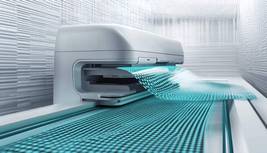Modern Flat Roof Installation: Balancing Performance, Cost and Sustainability
Flat roofs have evolved far beyond their traditional roles in industrial buildings. Today, they are an integral part of modern architecture in both residential and commercial projects. From elegant modern homes to large office complexes, flat roofs are characterized by their versatility, space efficiency, and design freedom. They can be used for solar panels, HVAC equipment, rooftop gardens, or recreational areas, making them much more functional than sloped roofs in many contexts. However, with these opportunities comes complexity. The installation of a modern flat roof requires a balance of performance, cost, and sustainability. A well-installed flat roof can last 25–40 years, but poor planning or material selection can lead to leaks, energy loss, and high repair costs. Decisions made during the planning and installation phases, from choosing a bitumen roof to calculating the cost of roof insulation, have long-term consequences.
Introduction to Modern Flat Roof SystemsIn construction, a flat roof is not completely flat; it typically has a slope of 1–5° to ensure proper water drainage. Despite this slight slope, these systems are highly efficient in terms of material usage and construction.
Applications
- Residential buildings: modern homes, extensions, and garages.
- Commercial spaces: warehouses, offices, commercial complexes.
- Multifunctional buildings: the roof space is used as a green roof or recreational area.
Advantages
- Cost-effectiveness of flat roofs, as less material is needed.
- Simpler installation of rooftop equipment.
- The possibility of adding sustainable solutions, such as green roofs or solar panels.
Types of Flat Roofing Materials with an Emphasis on Bitumen Solutions
The choice of roofing material is fundamental to performance.
Bitumen Roofs: An Industry Classic
Bitumen materials remain one of the most widely used solutions due to their durability and adaptability18. They consist of asphalt-based compounds reinforced with polyester or fiberglass, providing strong waterproofing.
- Built-Up Roof (BUR): multiple layers of bitumen and reinforcement.
- Modified Bitumen: improved flexibility and weather resistance.
- Advantages:
- High resistance to water penetration.
- More cost-effective than new synthetic membranes.
- Compatible with various types of insulation.
Single-Ply Membranes
- EPDM: synthetic rubber that is flexible and UV-resistant.
- TPO and PVC: thermoplastic membranes with reflective properties that improve energy efficiency.
Roofing Felt
A traditional component often used in multi-layer bitumen systems. Although durable, the price and cost of roofing felt vary depending on its thickness, reinforcement, and the region.
The Importance of Insulation and Its Impact on Performance
Insulation is essential for both energy efficiency and the longevity of the structure.
Types of Insulation
- Polyisocyanurate (PIR): high thermal resistance, lightweight.
- Extruded Polystyrene (XPS): excellent compressive strength, ideal for inverted roofs.
- Mineral Wool: fire safety and acoustic insulation.
Economic Impact
The cost of roof insulation is a significant budget factor. Although a higher initial cost can be a deterrent, quality insulation reduces heating and cooling expenses, making it a cost-effective investment.
The Roof and Insulation as a System
The performance of a flat roof depends on the interaction between the roof and insulation35. Moisture penetration reduces the effectiveness of insulation, so precise installation and moisture diagnostics are important.
Detailed Cost Breakdown for Materials and Installation
Material Costs
- Bitumen roof: generally mid-range in price with high durability.
- Roofing felt price: varies significantly by type, usually cheaper but requires multiple layers.
- Single-ply membranes: higher initial costs but require less labor.
Installation Costs
The cost of flat roof installation depends on:
- The size and complexity of the roof.
- The choice of insulation.
- The region and labor rates.
- The removal of the old roof.
Budget Planning
Homeowners often focus on the initial cost of flat roof installation, but professionals should emphasize the life-cycle costs. A slightly larger initial investment in quality materials and insulation reduces overall costs in the long run.
Sustainability Aspects of Flat Roof Systems
- Energy Efficiency
- Reflective membranes and well-designed insulation reduce energy demand.
- Material Sustainability
- Bitumen materials can include recycled content. PVC and TPO membranes can be recycled after use.
- Green Roofs
- Flat roofs offer unique opportunities to create green roofs, improving biodiversity, managing stormwater, and providing building insulation.
- Reducing the Carbon Footprint
- Material selection and supply strategy affect the construction's carbon footprint.
Modern Installation Methods and Best Practices
Today, contractors are increasingly offering full-cycle roofing solutions that cover the entire process—from design and material supply to installation and maintenance. This integrated approach simplifies project coordination and ensures the entire process is managed by a single team.
Common Installation Methods:
- Torch-applied bitumen: provides excellent adhesion and durability but requires skilled labor and strict safety measures.
- Cold-applied: a safer alternative, especially suitable for residential projects where open flame work is not desirable.
- Mechanically fastened membranes: often used for large commercial roofs, allowing for faster installation with reliable performance.
- Fully adhered systems: create a uniform protective layer that improves waterproofing and reduces the risk of wind damage.
Strict quality control is important. This includes electronic leak detection, careful inspection of layers during installation, and ensuring the correct roof slope to prevent water accumulation.
Maintenance Requirements and Long-Term Performance
Regular Inspections
Recommended twice a year to check for holes, drains, and membrane wear.
Common Maintenance Activities
- Clearing drains of debris.
- Sealing joints and flashing.
- Re-coating bitumen systems if necessary.
Economic Value
Regular maintenance prevents premature replacement and justifies the initial flat roof installation cost, extending its lifespan.
Future Trends in Flat Roofs
The future of flat roof technology is driven by innovation and sustainability.
- Smart diagnostics: drone inspections, thermography, and electronic moisture detection will become standard practice.
- Renewable energy integration: solar panels and hybrid solutions that combine solar power with green roofs.
- New materials: self-healing membranes and biological alternatives to traditional bitumen.
- Circular economy: old membranes and insulation are recycled or reused in new construction.
Conclusion: A Balanced Approach
Modern flat roof installation is no longer a simple construction task. It is a strategic decision that requires balancing:
- Performance: durable materials, such as bitumen membranes, ensure waterproofing and longevity.
- Cost: both the price of roofing felt and the total installation costs must be considered for smart budget planning.
- Sustainability: efficient insulation, green roofs, and recyclable materials help achieve modern environmental goals.
For building owners, managers, and contractors, the key to success is to view flat roofs as an integrated roofing and insulation system, where every decision—materials, installation, maintenance—determines long-term performance. With the right knowledge and tools, a flat roof can provide the balance required by the modern construction industry.
|
|

